Study: Effect of degrees of freedom on the quality of use of virtual theatre experience
Do 360° videos offer a good enough experience for immersive stage events? In a study with 26 probands, we analyzed the influence of the degrees of freedom (DoF) of movement in seated applications. The results show that the perception of presence and QoE were significantly higher with six degrees of freedom (6DoF) than with three degrees of freedom (3DoF).
What influence do the degrees of freedom have in VR?
The degrees of freedom indicate the extent to which a user can move freely in VR.
To provide real-world content for HMDs, 360° video is the current most cost-effective and straightforward approach to produce and implement content that can deliver realistic experiences. Concerts and other stage events are often filmed in 360° video. 360° video content can be stereoscopic, but it remains limited to three degrees of freedom (3DoF – rolling, pitching, yawing). However, for the creation of a spatial sense of presence, additional spatial movement, such as translational motion (elevating, strafing, surging) within 6DoF is of great importance. The question arises as to whether 360° video is sufficient for immersive VR experiences or if they should offer 6DoF.
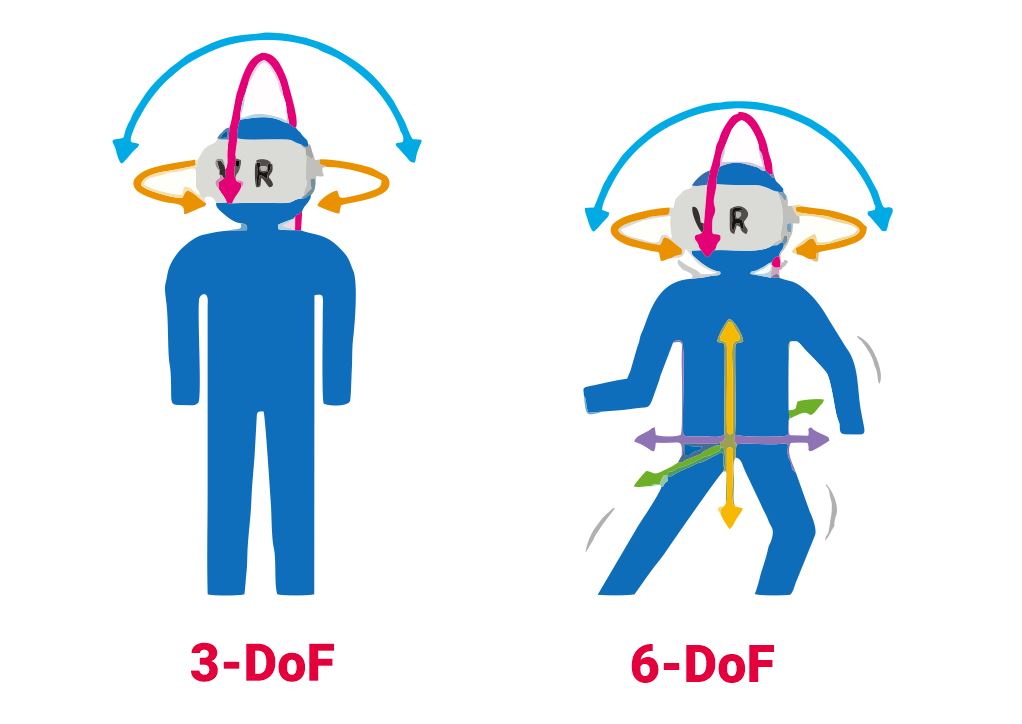
Influence of the degrees of freedom on the VR experience
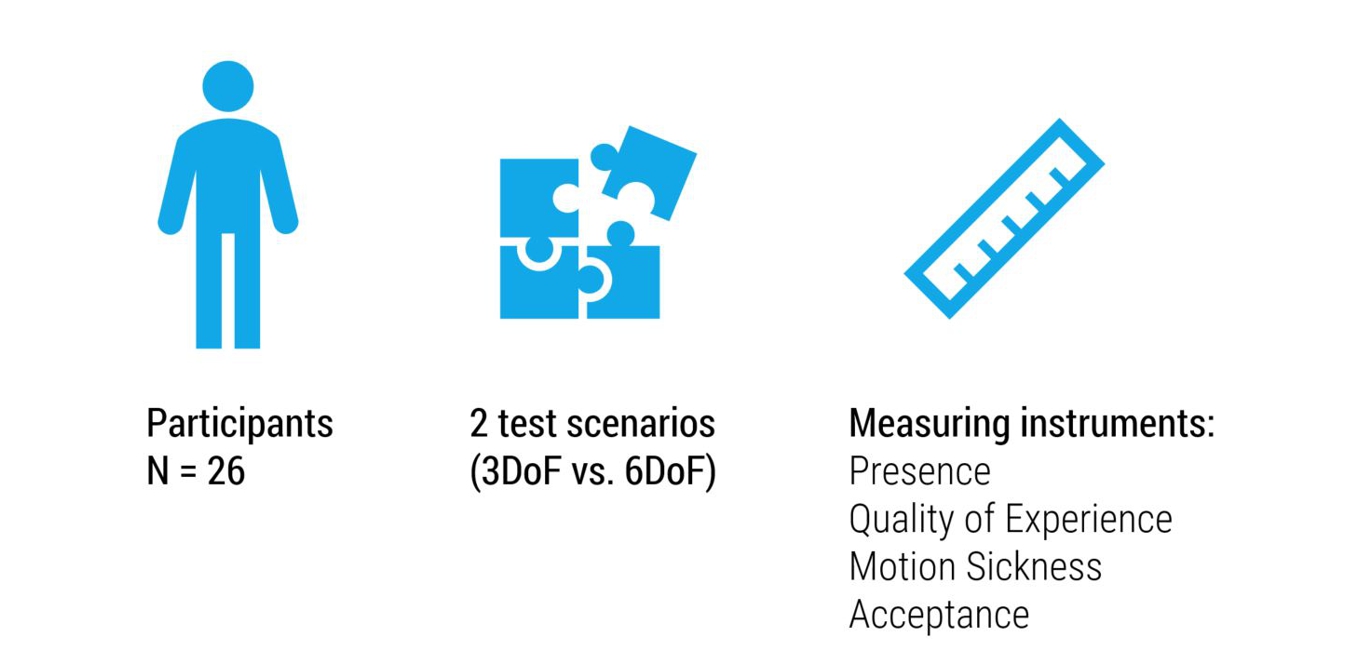
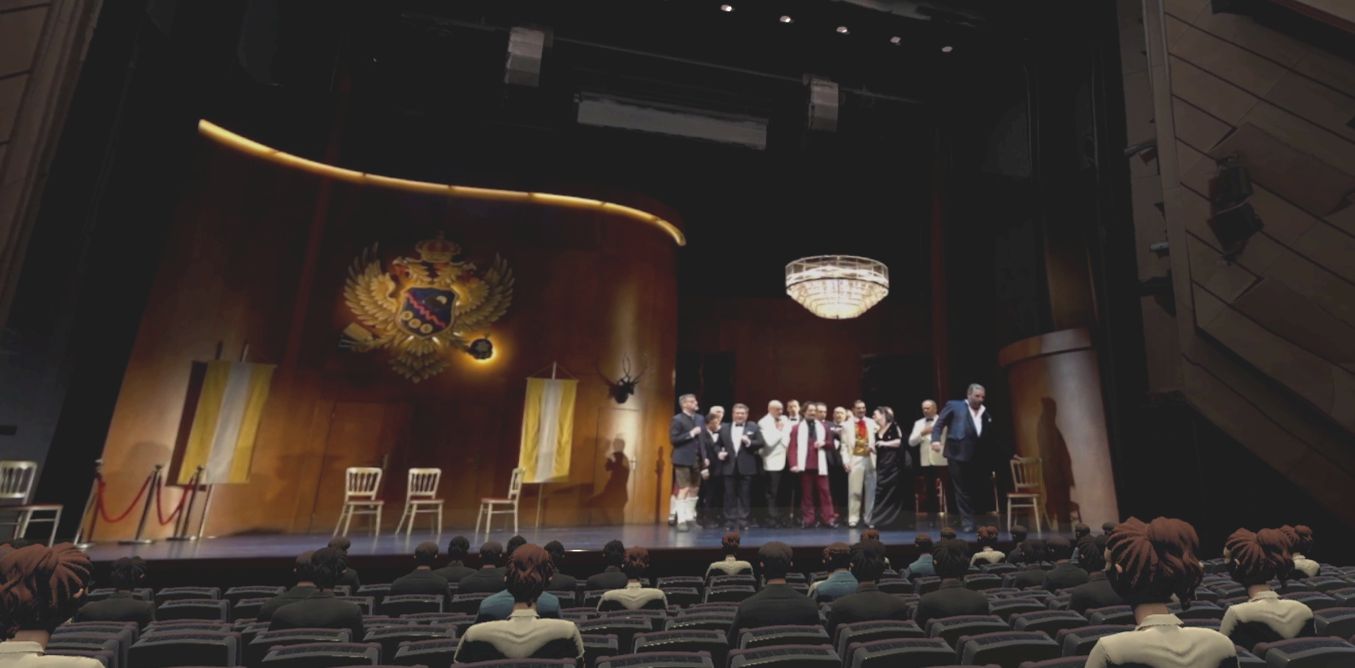
Methods und marerials
The methods of our study
We invited 26 participants to experience our VR theater experience at the Chemnitz Theater. The study was conducted in a seated position, just as you would watch a theater performance. The VR experience was presented to the test subjects in randomized order with 3DoF and 6DoF. After each variant, the participants were asked questions about presence, experience and motion sickness on the basis of standardized questionnaire instruments. The participants were also asked about their acceptance of the respective variant.
Results
With 3Dof there was also a significant deterioration in the spatial experience of presence, which has a negative effect, especially regarding the argument of using immersive media to feel present. As a result, the overall experience is also significantly reduced. In the direct comparison all participants rated the 6DoF version as better than the one with 3DoF. All participants noticed the differences between the two versions when directly comparing the pairs and opted for the 6DoF version. 15 participants not only rated the 6DoF version better, but also specifically rejected the 3DoF version as unpleasant.
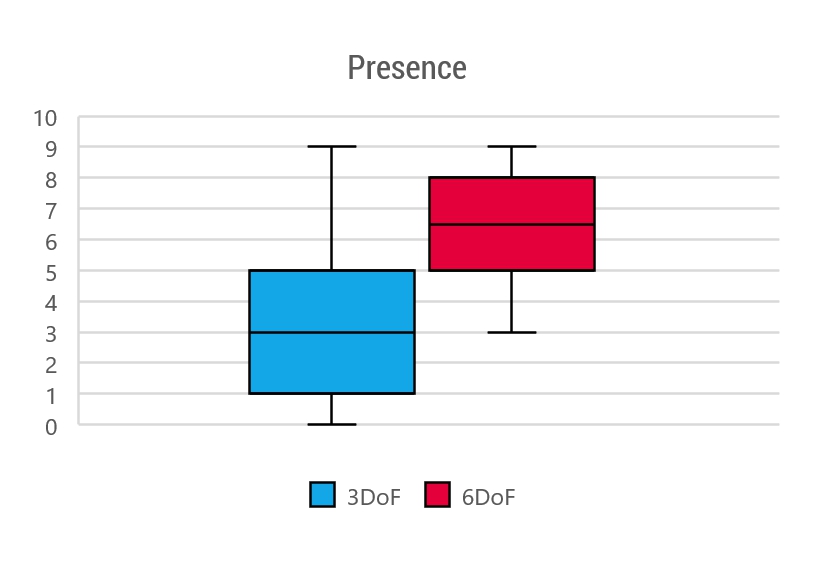
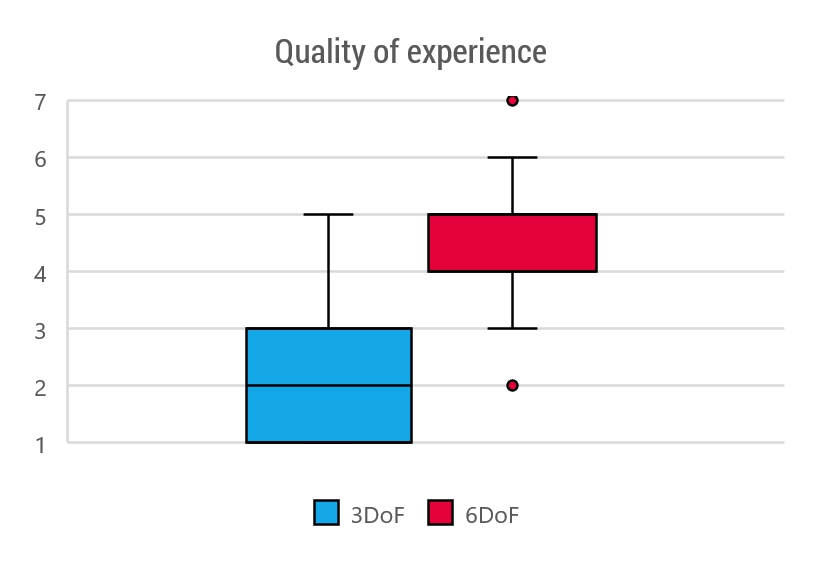
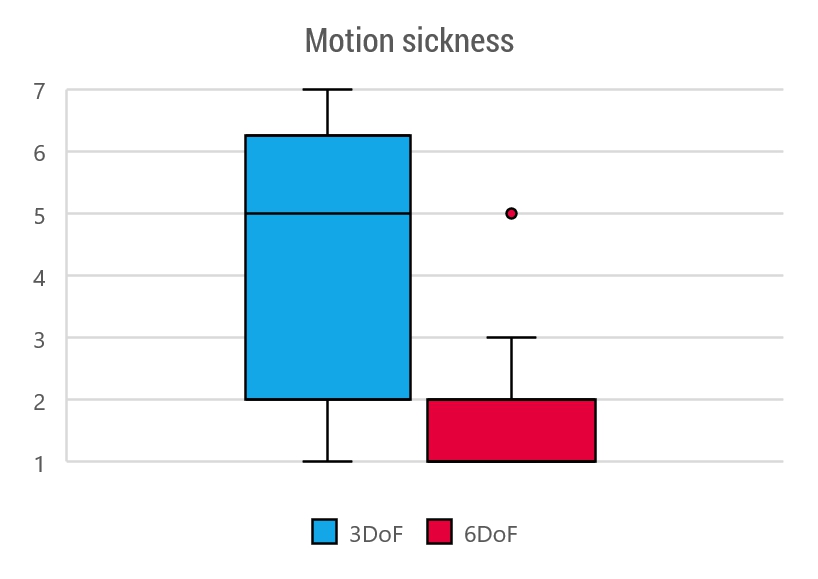
Results of presence, quality of experience and motion sickness
Conclusion
The results show that a lack of DoF in translational motion has a negative effect on the evaluation of virtual content. Not only was the variant with 6DoF preferred and rated higher but also the variant with 3DoF was downright rejected, mainly due to the effect of motion sickness. The findings thus clearly show that even under the special contextual conditions of stage events, such as seated consumption, dark immediate surroundings and focused distant areas, the lack of DoF in translational motion have significant negative effects on the experience components and the acceptance of use. Even if many implementations currently rely on the use of 360° video for reasons of technical feasibility, which might also offer added value in the short term, the results of the present study indicate that this technology will probably not become established in the long term.
Download das original paper „Effect of Degrees of Freedom on the Quality of Use of Virtual Theatre Experiences“ published on 2023 IEEE International Symposium on Mixed and Augmented Reality Adjunct (ISMAR-Adjunct
